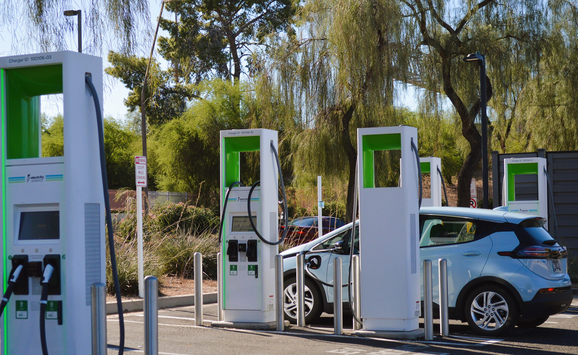The announcement this week that the Trump administration is reopening the CAFE/GHG rules for light-duty vehicles was expected. The widely known stance of the administration on climate change, Environmental Protection Agency (EPA) Administrator Scott Pruitt's criticism of the Obama policy, and the dramatic reductions in oil imports (thereby diminishing the energy security rationale for fuel economy standards) all contributed to the reconsideration of the 2022-2025 model year standards. But what happens next is key for whether the Trump administration and the auto companies can be part of the solution for addressing long-term climate policy.
The auto companies and suppliers are aware that they will have to consider climate change and climate policies in business plans now and in the future, long after the Trump administration and its climate change skeptics are gone. This is why these industries worked with the government to develop the vehicle fuel efficiency standards established in 2012. The need to reduce greenhouse gas emissions from vehicles is here to stay.
The problem with vehicle fuel economy standards is that they must be set well in advance of the time a new vehicle comes to market. The debate today is over vehicles that will be sold over 4 years from now. Automakers need long lead times for developing new technologies and for redesigning vehicles. However, there is uncertainty about key parts of their ability to comply, including the pace and scope of technology innovation and future fuel prices.
Tighter standards sometimes require new technologies that have yet to be developed or are not yet cost-effective. Many automakers today argue that they will not be able to meet the 2022-2025 standards without more plug-in electric vehicles (there is dispute about this—some argue that they can meet the 2025 standards with conventional and improved gasoline engines). Battery technology has not progressed as quickly as many had hoped. Electric vehicles are still expensive, and have limited range. And many of the automakers argue that there is still uncertainty about cost and consumer acceptance of some conventional vehicle technologies that will need to be in place to meet the 2025 standards.
Falling fuel prices make it more difficult to sell smaller, lighter, more fuel-efficient cars. When the agreement for the current standards was negotiated between the auto companies and the federal government in 2011, the crude oil import price was over $100/barrel for the year, having recently come up from a low of $69 in December 2009. Certainly recent price behavior would support the industry concern, with the current real price so far in 2018 averaging $55. What matters for the current debate on standards, though, is what the price of crude oil will be by the time the vehicles at issue—2022-2025 model years—roll into the showrooms. On this, the Energy Information Administration offers a wide range of forecasts, with their best estimate in the $80 range for that period and with scenarios that run as high as over $150 per barrel and as low as $40 per barrel.
With uncertainty about the rate of improvement in technology, and about future fuel prices, it becomes important for the rules to have some flexibility to avoid the need to continually change them. The rules designed by the EPA and the National Highway Traffic Safety Administration starting in 2012 did build in a good deal of flexibility. The recent low gasoline prices have meant consumers want to buy larger vehicles, and the rules specify lower standards for those vehicles, meaning automakers have a lower overall fuel economy target. In addition, the automakers can earn GHG reduction credits in a number of ways, reducing more than the standards require. They can then sell those credits to other manufacturers or bank them for future compliance. The regulations also provide many incentives for plug-in electric vehicles, in order to promote lower costs for electrics, allowing more of them to come to.
In spite of these incentives and flexibilities, the automakers still argue that the cost of attaining the standards will be too high. Another way of adding flexibility is to have a safety valve that guarantees that the cost of reducing emissions from a manufacturer’s vehicles will not exceed a certain amount. One way to do this is to set a cap on the price of a CO2 emission credit for the automakers. For example, the EPA could make emission reduction credits available to any auto company at a specified price. The companies then know that the cost for additional vehicles with required emissions reduction will not exceed that price. And in the event that technology (such as battery storage capacity) progresses more quickly than the companies predict or if gasoline prices are higher than they expect, the auto companies will not need to use the safety valve.
There are likely other ways that flexibility can be added to make the rules less costly and more effective at reducing greenhouse gases. But clear and transparent negotiations amongst the states, the federal government, and the auto companies will be required for a long-run vehicles strategy that will benefit all of society.






